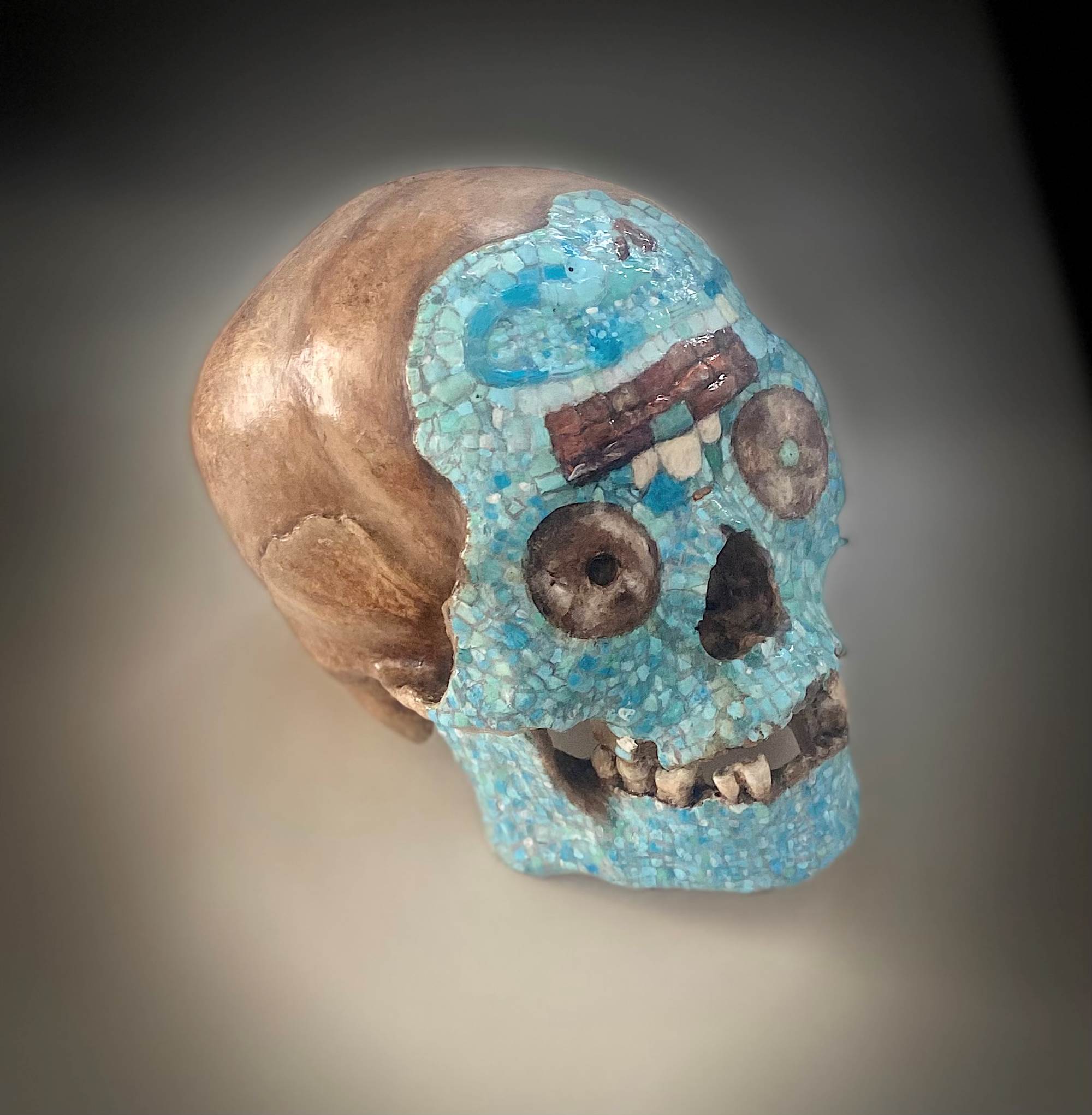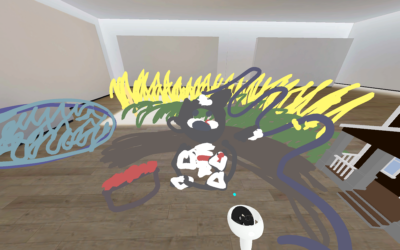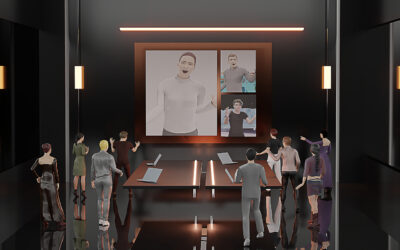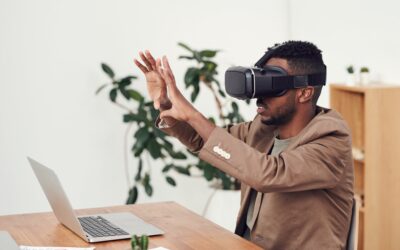On the 17th of April, the XR ERA community was joined by John Walker and Liselore Tissen to delve into the often tricky realm of Responsible XR and, in particular, its intersection with 3D printing in cultural heritage.
Having first gained a clear impression of what is meant by Responsible XR, certain frameworks through which responsibility can be evaluated, and what potentially lies at stake should ethics be disregarded, we were then invited to reflect upon Liselore’s lived and less than ideal experience with the practicalities of its implementation in the field of heritage restitution – a process which brought forth quite some food for thought.
ABOUT OUR SPEAKERS
John Walker is an Emerging Technology Officer at SURF – a not-for-profit collaborative organisation for IT in education and research based in the Netherlands. His work focuses largely on Responsible XR, in which capacity he recently co-authored SURF’s report titled, “Responsible XR: Public Values for XR in Education and Research”.
Liselore Tissen is a lecturer and external PhD-candidate at LUCAS & Delft University of Technology. Moreover, she holds the positions of both Communication, Education, & Research Manager at CLARIAH & SSHOC-NL and Face of Science at the Royal Netherlands Academy of Arts and Sciences.
GOOD TECHNOLOGY, PUBLIC VALUES, AND PREPARATION FOR DISRUPTION
Opening the Meetup, John provides a selection of key overarching questions, establishing a framework through which to consider our upcoming discussion:
- What is good technology?
- How can we shape tech to our public values?
- How can we be more prepared for disruptive technologies in the future?
Such questions have been particularly prevalent since the arrival of Chat GPT, concerning which, as John remarks, there remains even now a broad sense of panic within the educational sphere. In each case, their answering ought to prompt the asking of one further question, namely ‘where are we going and how are we going to get there?’.
With Responsible XR, much ultimately comes down to the word ‘should’. Often, there is little to no formal legal obligation concerning responsibility. As John puts it, “it’s extra” and must be regarded as separate from both ‘accountability’ and ‘liability’. Whereas ‘accountability’ concerns being answerable for an action/outcome and ‘liability’ concerns being legally responsible, when we speak of ‘responsibility’, we refer to a non-obligatory feeling of duty. Although this distinction may not always be intuitive, John reminds us of the almost ubiquitously familiar concept of ‘responsible drinking’ – why promote responsibility regarding this topic but not others?
RESPONSIBILITY AS A PRACTICE: WHY ARE WE HAVING THIS DISCUSSION?
Moving now to discuss the philosophy and theory behind research in Responsible XR, John draws a distinction between ‘Responsibility in Practice’ and ‘Responsible Systems’. As he explains, whereas the notion of ‘responsible systems’ regards accountability as “a tool for motivating better practices” (Nissenbaum 1997, p.43), “responsibility as a practice refers to the idea that responsibility is not just a theoretical concept, but a practical skill that needs to be developed and exercised”. In much of society at present, this culture of accountability is frequently found lacking – a state, according to the philosopher Helen Nissenbaum, owed to four key factors:
- The problem of many hands for any one task
- The acceptance of computer bugs as an inherent element of large software systems
- Using the computer as a scapegoat
- Ownership without liability
As John clarifies, what Nissenbaum aims to convey in her discussion is the observation that society is not developing systems which support the acknowledgement of responsibility and accountability.
In sum, the topic of ethics is a complex one, increasingly challenging to implement.
WITH THIS IN MIND, WHAT VALUES COULD WE PROPOSE FOR XR IN RESEARCH & EDUCATION?
When talking about values, whether XR-related or otherwise, it’s essential to pose the question of whose values we are discussing. Concerning Apple’s Vision Pro, for example, the strap depicted in marketing campaigns is not the strap which allows the headset to be worn for extended periods of time. This alternative strap, which is comfortable but less aesthetically pleasing and therefore less commercially attractive, remains firmly in the box, only to be discovered by many upon purchase.
Who, then, decides which ethical principles should be followed? Often, John hears it said that this role falls to the market yet, if wholly the case, this becomes problematic. Considering the scale of the issues theoretically possible should biometric data be mishandled, it is worth weighing up what the priorities of certain companies are likely to be and how this can influence decisions taken.
To round up, John then asks the question of whether it is possible to do more and, if so, how? With this, he provides an introduction into some of the resources made available by SURF on this topic, all of which are to be found at this article’s conclusion.
IS WHOLLY RESPONSIBLE XR POSSIBLE WITHIN THE SPHERE OF CULTURAL HERITAGE?
This question underlies much of Liselore’s work and research, including her turbulent experience 3D printing a Ñuu Savi Mixtec skull from within the collection of Leiden’s Wereldmuseum. Although a process undertaken with nothing but positive intent and curiosity, it was this project which led to her firm conclusion that, although there are without doubt occasions which permit XR’s use within the cultural heritage field, equally, there are many which do not.
As Liselore explains, although it is often something of a challenge to discern where the line lies between when XR should be used or avoided, one often influential factor is cultural distance. When an object comes from a culture to which we ourselves belong, we are considerably more likely ourselves to be aware of how the act of its replication would be perceived. If coming from a western culture, one ought to be cautious when applying western values elsewhere, presuming that your own cultural norms continue to apply. Moreover, there are certain subject areas which ought to be treated with caution owing to their sensitive nature. To exemplify, Liselore briefly touches upon the already complete project of a virtually reconstructed Auschwitz Birkenau. In such cases, although it is technologically possible to reconstruct an object or site, simply because we can does not mean that we must.
THE PROJECT
During her research, when Liselore was approached by an individual from Oaxaca, Mexico – the area from which the aforementioned Ñuu Savi Mixtec skull was believed by the Leiden museum to have originated – who spoke of their desire to have the skull restituted and asked her to assist, she took reassurance in their presumed cultural awareness.
Having understood the request as a means of both spurring meaningful dialogue and coming up with a mutually satisfactory solution for both the Dutch museum and community of origin, they weighed up the options for how the restitution process could be carried out. For the project, four principal objectives were then established:
- To assess the extent to which a high-quality one-to-one 3D printed reproduction could be helpful within restitution-oriented debates
- To determine whether a 3D reproduction and digital model might be able to aid communication and dialogue between stakeholders including researchers, museums, and communities
- To test whether a 3D reproduction might satisfy the needs of both a museum and community of origin
- To develop a toolkit for disclosing contested and sensitive objects digitally as well as physically using 3D printing in a inclusive and accessible manner
The decision was made to have the skull 3D printed before being painted to resemble the original as closely as possible. Following this, it was sent to the Leiden University Medical Centre to undergo a CT scan, allowing both the skull to be identified as from Oaxaca and Liselore to access the data required for the 3D printing process.
After Liselore had finished painting the reproduction skull, she then accompanied it to Oaxaca in Mexico where she observed its potential as an educational tool within a local school. Although the hand-painted skull was well-received by the children, opinion was soon to change when adult representatives of the community arrived in the Netherlands to observe the skull in the Wereldmuseum.
At this moment, as Liselore noted, the fact of this skull having its origins within what remains a living culture became blatantly apparent. Those in Leiden were upset not only by their ancestor’s display in a museum, but also by Liselore’s decision to CT scan the skull. With the latter, there were two principal issues. Firstly, they claimed that the scan and printing process had been undertaken without their permission as a community. Secondly, the process of the skull’s CT scanning meant that the data thereby collected would be kept on long-term record at the hospital with a patient ID.
LESSONS LEARNED
Ultimately, Liselore claims that the process of creating a 3D printed reproduction of the skull resulted in more problems than solutions. Merely a selection of the questions which arose include:
- Does the skull from Oaxaca still need to be displayed?
- Who gets the 3D print and who the original?
- Even if the skull were now to be restituted to Mexico, how many members of the community would have access to it?
- How many people would have access to a digital model?
- How can you know who belongs to the community?
Although her initially desired outcome was never manifested, it is worthwhile to note that both she and the skull’s community of origin believe the experience of investigating the possibility of digital and 3D printing restitution to have brought forth valuable discussions.
With this in mind, what Liselore shares as her key take-aways and lessons learned are these:
- “Even with good intentions, so much can still go wrong because objects are part of a living culture”
- “Always engage with the community of origin because restitution is not a yes for no, but a process and conversation”
- “There’s no one-size-fits-all because authenticity is not just that one object, its is multifaceted”
- “There are still numerous technological issues to overcome”
- “3D and digital technology is not accessible to everyone”
- “Digital approaches might not be the solution to everything and can be harmful both now and in the future”
- “Think, talk, and engage before you 3D scan, prink, and link”
Thank you very much to John and Liselore for joining us to share their insights and experiences! If you would like to know more about their work, the links to some resources are below.
RESOURCES
Responsible Tech: On Public Values and Emerging Technologies by John Walker & Duuk Baten (Report)
Why talk about responsible XR? (Video)
3D Printing and the Art World: Current Developments and Future Perspectives by Liselore Tissen (Article)
The image of the 3D printed Mixtec skull featured in this article is accredited to Liselore Tissen.




